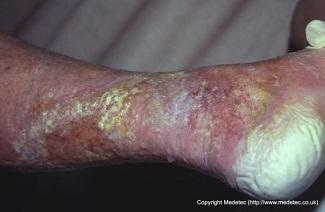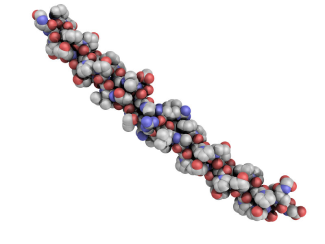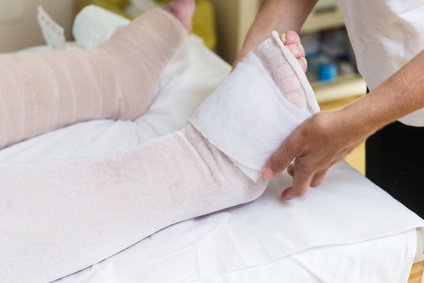Preventing Maceration in Wounds
June 11, 2020
Maceration occurs when skin has been exposed to moisture for too long. A telltale sign of maceration is skin that looks soggy, feels soft, or appears whiter than usual. There may be a white ring around the wound in wounds that are too moist or have exposure to too much drainage. Most instances of maceration are mild and resolve on their own without medical intervention. Maceration of the skin around wounds, conversely, requires treatment. Untreated maceration of wounds can prevent the wound from healing, contribute to bacterial or fungal infection, and cause irritation or pain. Other negative outcomes of wound maceration include tissue damage and tissue necrosis, high-grade dermatitis, and wet eczema.1
Skin Injury and Chronic Wounds: Shear, Pressure, and Moisture
By identifying patients who are at risk of developing wound maceration and providing appropriate care, clinicians can prevent wound maceration.
What Causes Maceration in Wounds?
Maceration can occur anytime skin is exposed to moisture for extended periods. Most people experience mild skin maceration from water when swimming or taking a long bath. Other common sources of moisture contributing to maceration are sweat, exudate, urine, and feces. The location of a wound on the body and the type of skin characteristics present (greasy or dry, thin or thick) can also play a role in the development of maceration, as can age, sex, and underlying physical conditions.1 Certain conditions put people at risk for experiencing maceration. For example, people with obesity may have sweat-induced maceration between the folds of their skin. People with incontinence may experience maceration in the genital area, caused by urine or feces.
People with chronic wounds are particularly at risk for developing maceration around their wound sites. Without proper medical care, some chronic wound areas may become macerated. Maceration of wound sites is primarily caused by exudate, a fluid that emerges from wounds.2 Unlike the exudate from acute wounds that quickens healing, the exudate from chronic wounds contains enzymes called proteases that break down skin proteins and cause maceration around the wound.3 Chronic wounds that are likely to experience maceration are venous leg ulcers, diabetic foot ulcers, and fungating wounds, among others.3
How Can Wound Maceration Be Prevented?
Keeping the wound environment moist leads to better outcomes for the patient than dry wound environments. Studies have shown that moist wound environments support faster healing, greater wound contraction, less scarring, and reduced rates of infection, among other positive benefits.2 Patients also report that the removal of wound dressings is less painful if their wound has been kept moist.2
If a wound area becomes too moist, however, then maceration can occur and thwart healing. Clinicians are therefore tasked with the challenge of keeping the wound environment moist enough to support healing but dry enough to prevent maceration. The primary way that maceration of wounds can be prevented is to treat the underlying problem that is causing the flow of exudate. For instance, venous leg ulcers commonly have moderate to heavy drainage or high-flow exudate. Treatment of venous leg ulcers may involve applying compression therapy or elevating the leg to manage the drainage and treat the underlying cause. Once treatment options have been employed, it is time to consider the appropriate wound dressing to prevent maceration and promote healing. The amount of exudate the wound is expelling should determine the dressing chosen.
For a wound with a large volume of exudate, choose a highly absorbent dressing, such as a hydrofiber.1 For a wound with a lower volume of exudate, a less absorbent dressing may be appropriate. The goal is to have the dressing absorb the exudate and thereby prevent the skin around the wound from absorbing it, without drying out the wound site. To prevent maceration, it is important to change dressings frequently. Leaving dressings on for too long, especially for wounds that are producing large volumes of exudate, can lead to maceration. Heavily exudative wounds should not have dressings left on for more than one day.1 Moderately or lightly exudative wounds may have dressings left on for longer. If the clinician notices symptoms of an infection, they may need to change the dressings more often; if they notice that the wound is healing, they may change the dressings less often.
Conclusion
The patient's medical history, the cause of the wound, the amount of wound exudate, and the location of the wound on the body are necessary to consider before applying dressings. Although the ideal wound dressing is based on specific characteristics of the patient and the wound, the goal of the dressing is always the same: maintain a moist wound environment that promotes healing while avoiding maceration of the area.
References
1. White R, Cutting K. Interventions to avoid maceration of the skin and wound bed. Br J Nurs. 2003; 12(20):1186-1201. https://www.researchgate.net/publication/8951580_Interventions_to_avoid…. Accessed April 28, 2020.
2. Rippon MG, Ousey K, Rogers AA, Atkin L. Wound hydration versus maceration: understanding the differences. Wounds UK. 2016;12(3):62-68. https://www.wounds-uk.com/download/resource/976.pdf. Accessed April 28, 2020.
3. Cutting KF. The causes and prevention of maceration of the skin. Nursing Times. 2001. https://www.nursingtimes.net/clinical-archive/tissue-viability/the-caus…. Accessed April 28, 2020.
4. Graham C. Best management of exudate and maceration. Nursing in Practice. 2004. https://www.nursinginpractice.com/best-management-exudate-and-maceration. Accessed April 28, 2020
The views and opinions expressed in this blog are solely those of the author, and do not represent the views of WoundSource, HMP Global, its affiliates, or subsidiary companies.













Follow WoundSource
Tweets by WoundSource